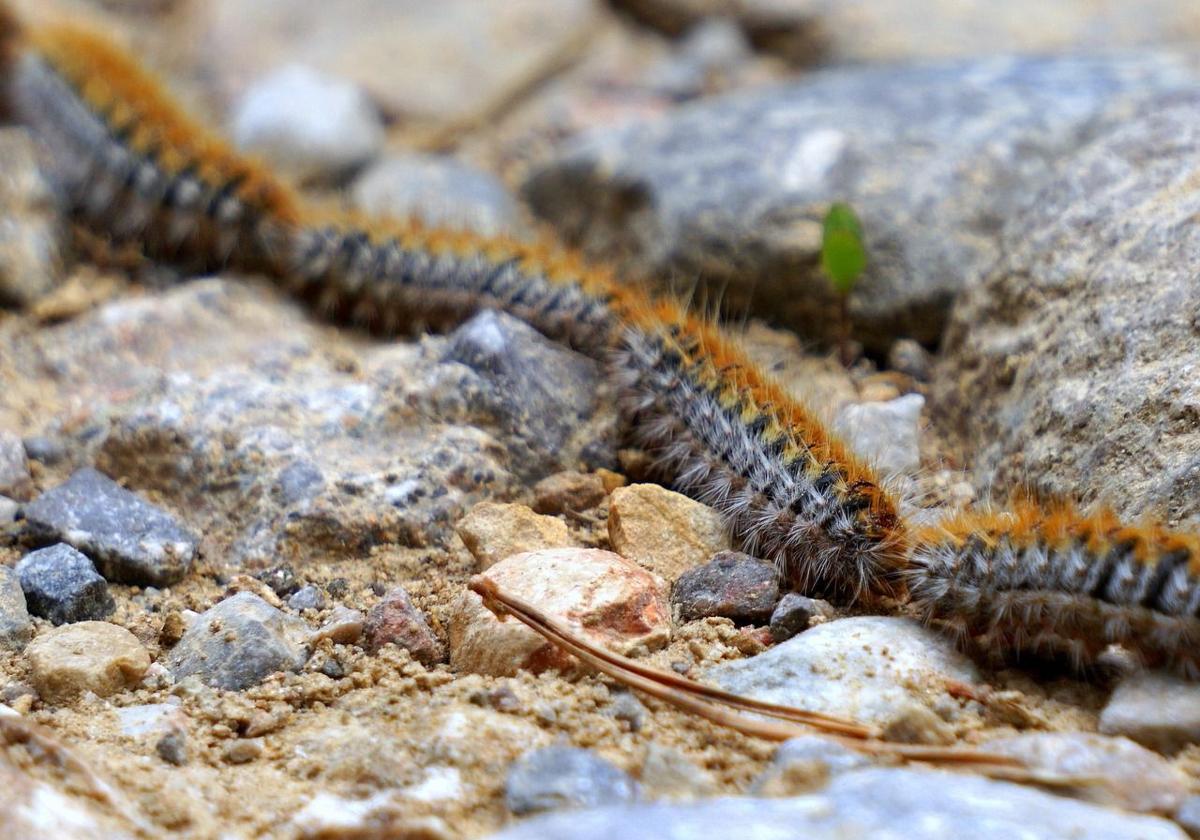High temperatures in Spain bring processionary caterpillar season forward
"Minimum contact with this caterpillar can generate allergic reactions" warns the national association of environmental health companies
SUR
Friday, 7 February 2025, 16:14
Processionary caterpillar season is getting earlier as temperatures rise year on year in Spain. As the national association of environmental health companies Anecpla has said, previously the caterpillars would emerge from their nests in March and April, at the beginning of spring. "Many regions with their mild temperatures, have already seen this plague in the middle of February," they said.
Both the Guardia Civil and the National Police have also echoed this warning on their social media. "Be very careful if you are walking with your dog and you see a processionary caterpillar. It has stinging hairs that can cause a very serious reaction," said the Guardia Civil on TikTok. The National Police added on X: "The processionary caterpillar has come early this year and we must be vigilant in places where there are pine trees."
Anecpla recommends that local authorities incorporate annual prevention campaigns into their actions in autumn. Jorge Galván, the association's general director, says: "Once we have seen that the processionary plague is coming earlier and earlier due to the effects of climate change, it is essential that we are the ones who anticipate the dangers that this may cause."
La #procesionaria 🐛 se ha adelantado este año y debemos estar atentos en los lugares donde hay pinos🌲
— Policía Nacional (@policia) February 4, 2025
Y si tu #mascota contacta con alguna de estas orugas👇🏻 pic.twitter.com/9xGlxVjrRO
Anecpla points out that even the slightest contact with the processionary caterpillar can cause dermatitis, eye lesions and allergic reactions. "Direct contact with the caterpillars is not even necessary. Just the touch of one of their hairs (which these insects release as a defence strategy when they feel threatened) is enough to cause irritation and allergies, especially if they reach the eyes," explained Galván.
These hairs have the scientific name of "trichomes" and it is estimated that each individual caterpillar has around 500,000 of them "ready to act as poisoned darts the moment they feel they are in danger", according to Anecpla. In the case of pets, especially dogs, this contact can even lead to death, said Galván.
Dogs may sniff a caterpillar out of curiosity. "At that moment, it is easy for the trichomes to get stuck in the animal's nose or eyes, causing symptoms such as inflammation, intense itching and abundant salivation. If they eat them (which is not uncommon if they have previously touched one with their paws and lick them because they are itching), the ingestion of the toxic substance that carries their trichomes can cause necrosis of the tongue or throat," Anecpla adds.
